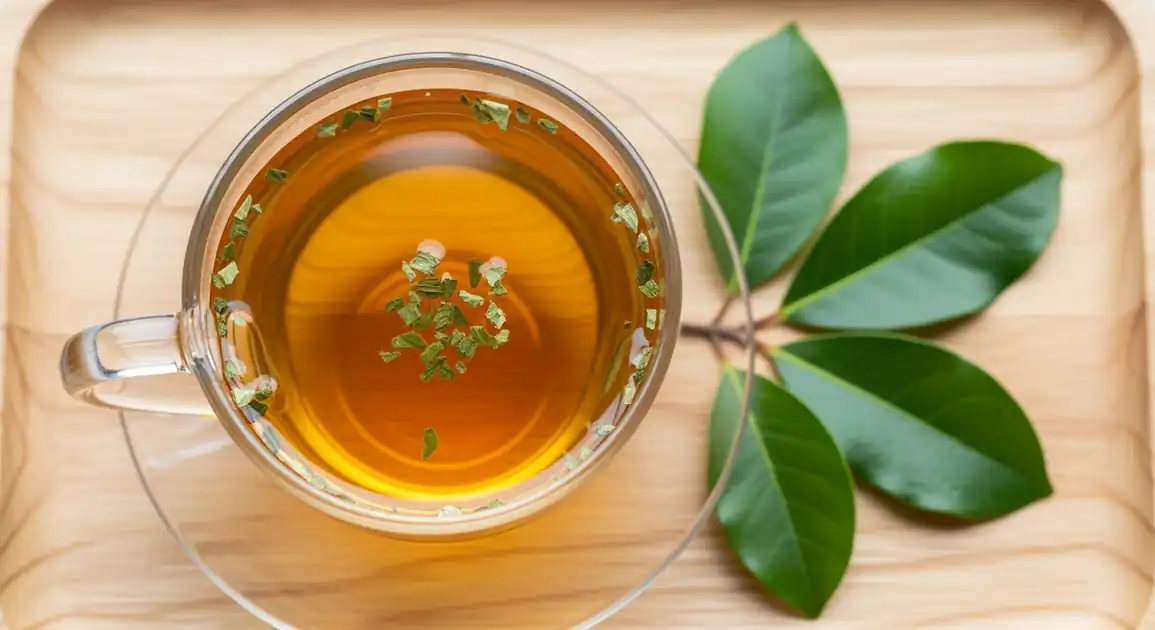Kawakawa Tea
Kawakawa Tea

Description
Throughout New Zealand, kawakawa tea represents both a cultural tradition and a growing interest in indigenous knowledge and native plants. While the kawakawa plant grows naturally across the North Island and northern parts of the South Island, the tea's preparation and consumption has spread nationwide as interest in Māori culture and natural remedies has increased.
Dietary Information
Serving information
Serving style
Typically served hot in a teacup or mug. At cultural centers or high-end cafes, it may be presented more ceremonially with fresh kawakawa leaves as garnish. Usually served with honey on the side.
Quick facts
Most market stalls operate 8 AM - 2 PM on weekends. Specialty shops typically follow standard retail hours (9 AM - 5 PM).
Safety Tips
What to Look For
-
Proper identification of kawakawa leaves
Ensure leaves have the characteristic heart shape and often small holes from looper moths. Kawakawa leaves should never be confused with other plants.
-
Kawakawa sourced from unpolluted areas
Quality tea comes from leaves harvested away from roads, industrial areas, or places with heavy pesticide use.
-
Cultural knowledge and respect
Vendors who understand the cultural significance of kawakawa typically handle and prepare it appropriately.
-
Clear, golden to greenish-brown liquid
The brewed tea should have a translucent color without cloudiness or odd particles.
What to avoid
-
Exaggerated health claims
Be wary of vendors making specific medicinal claims or selling kawakawa as a 'miracle cure.'
-
Extremely bitter or unpleasant taste
While kawakawa naturally has some bitterness, excessive bitterness may indicate improper preparation or poor-quality leaves.
-
Unknown sourcing
Avoid vendors who cannot explain where and how their kawakawa is harvested or processed.
-
Discolored, moldy, or unusually spotty leaves
Quality dried kawakawa should maintain some green color and shouldn't appear moldy, excessively brown, or have unusual discoloration.
Price information
Price range
Budget tips
- Market stalls typically offer better value than tourist shops.
- Buying dried leaves in bulk is more economical than pre-packaged tea bags.
- Cultural events and Māori tourism experiences often include kawakawa tea tasting at no additional cost.
- Some botanical gardens offer free tastings during guided tours of native plant sections.
Value indicators
- Tea made from organically grown or wild-harvested kawakawa.
- Products from Māori-owned businesses that harvest according to traditional practices.
- Transparent information about source location and harvesting methods.
- Fresh, vibrant color of dried leaves rather than dull, brownish appearance.
Where to Find This Dish
Farmers' Markets
Weekend markets across New Zealand often feature vendors selling dried kawakawa and other native plant products.
Various weekend market locations
Morning, Afternoon (weekends)
Cultural Tourism Sites
Māori cultural centers and tourism operators frequently offer kawakawa tea as part of the visitor experience.
Cultural centers, Marae (meeting grounds)
Morning, Afternoon
Health Food Stores
Specialty shops focusing on natural health products often stock dried kawakawa or tea blends.
Various locations nationwide
Business hours
Vendor Tips
- Ask vendors about their harvesting practices and knowledge of traditional uses.
- When possible, seek out Māori-owned businesses for most authentic preparations.
- Check if dried kawakawa still has a noticeable aroma when purchasing.
How to Order
Regional Variations
-
Traditional Kawakawa Tea
(Kawakawa Tea)
The most basic preparation using only kawakawa leaves steeped in hot water, sometimes sweetened with honey.
-
Kawakawa and Mānuka Blend
(Kawakawa and Mānuka Blend)
Combines kawakawa leaves with mānuka leaves or flowers for additional flavor and traditional wellness benefits.
-
Kawakawa with Honey
(Kawakawa with Honey)
Kawakawa tea sweetened specifically with mānuka honey, creating a complementary flavor profile while balancing bitterness.
-
Kawakawa Herbal Blend
(Kawakawa Herbal Blend)
Modern blends incorporating kawakawa with non-native herbs like peppermint, lemongrass, or ginger for varied flavor profiles.
-
Kawakawa Cold Brew
(Kawakawa Cold Brew)
A contemporary preparation method where leaves are steeped in cold water for several hours, resulting in a milder flavor.
-
Kawakawa Tonic
(Kawakawa Tonic)
A stronger concentration of kawakawa, sometimes with other rongoā Māori ingredients, intended specifically for traditional wellness purposes.
Cultural context
History
Kawakawa has deep cultural significance in Māori tradition, being considered a taonga (treasure) and valued for both medicinal and spiritual purposes. The plant's use dates back centuries, with kawakawa leaves being used in healing rituals, for pain relief, and digestive health. Kawakawa branches are also used in pōwhiri (welcome ceremonies) and other cultural practices. European settlers later adopted some of these traditions, and today the tea is enjoying renewed popularity as interest in indigenous knowledge and natural wellness grows throughout New Zealand.
Local significance
Kawakawa is considered a taonga (treasure) in Māori culture. The plant and its uses are connected to Tāne Mahuta (god of the forest) and traditions of rongoā (healing). Its ceremonial importance extends beyond consumption, with branches used in pōwhiri (welcome ceremonies) and other cultural contexts.
Eating customs
- Often served with honey, particularly mānuka honey, which complements its flavor.
- In traditional contexts, kawakawa may be prepared with specific intentions or karakia.
- Some prefer to acknowledge the plant's contribution before consuming.